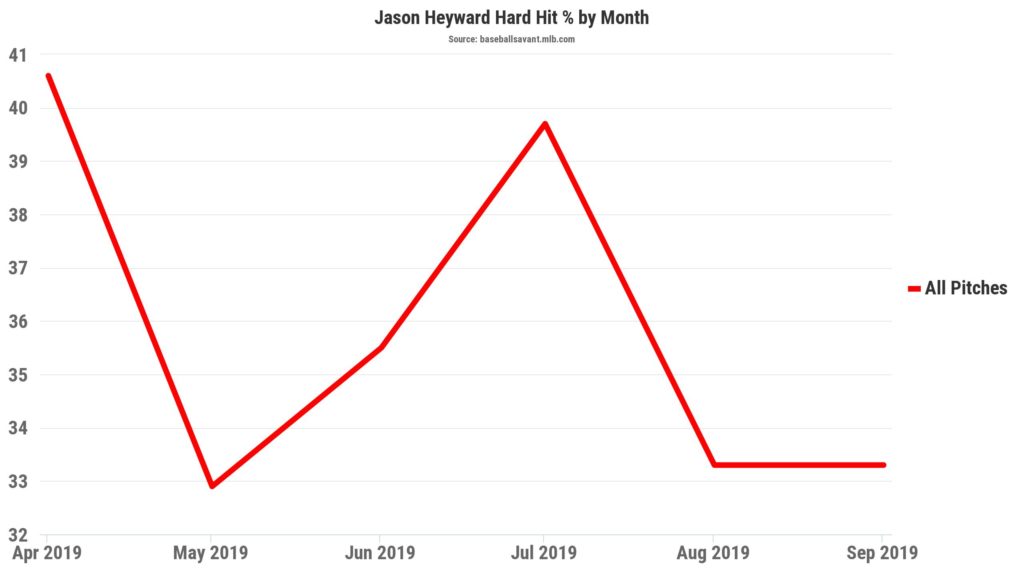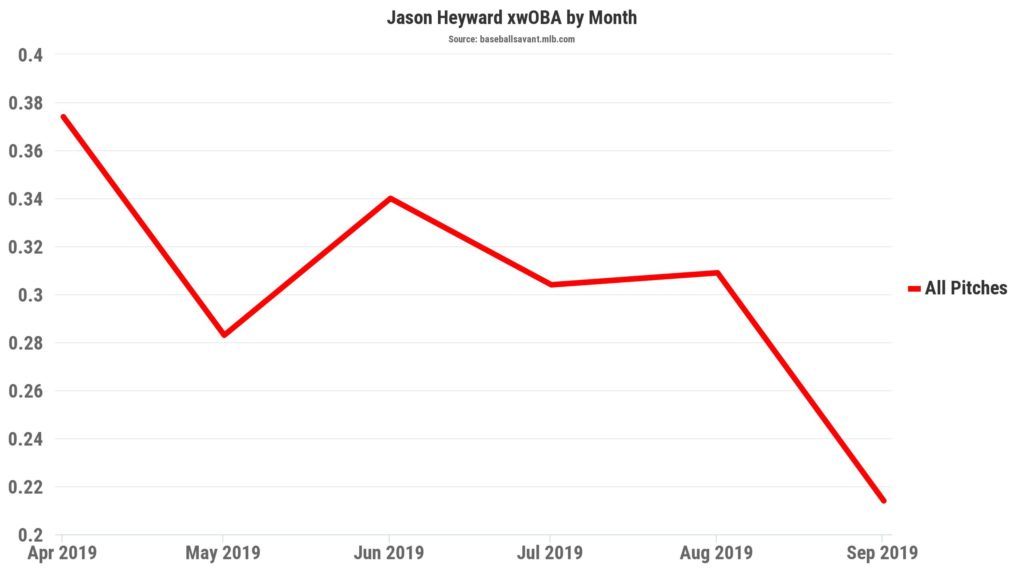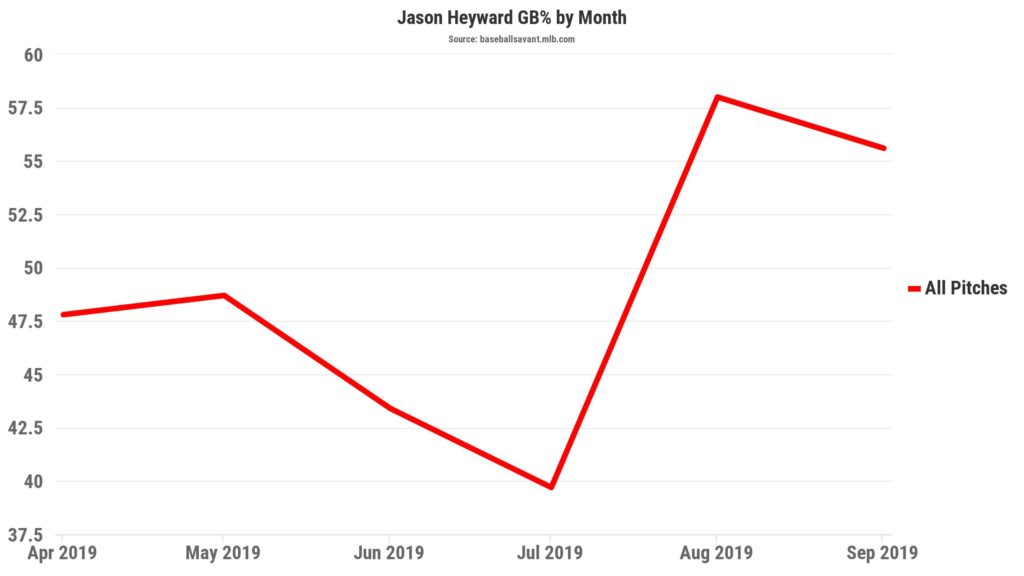
Are Jason Heyward’s Anemic Results Product of Bad Luck or Bad Contact?
After a season that started off with so much promise, Jason Heyward‘s 2019 campaign has taken a turn for the worst over the last several months. His wRC+, which once sat somewhat comfortably above the 100 (the default for a league-average hitter), has fallen steadily since June and now sits at 95 as of this writing
While Heyward’s July was weaker than the months leading up to it, the precipitous slide in which he currently finds himself really began in August. In that month, Heyward posted a putrid .587 OPS with a 57 wRC+, numbers that still represent huge improvements on the .259 OPS and -22 wRC+ he’s produced so far in September.
So what’s going on with Heyward? Is he really struggling as significantly as would be suggested by those results, or is he getting stung by bad fortune?
In order to develop answers, we can consult some of the handy tools provided by Baseball Savant. A good place to start is by looking at J-Hey’s xwOBA, which is essentially a measure of his expected results based on batted-ball data, compared to his actual wOBA results.
There’s a pretty significant crater in September in both metrics, but that’s such a small sample size that it’s probably not worth worrying about too much. By focusing more on the Y-axis values than the visuals here, you’ll note that, while both graphs point downward, Heyward’s actual wOBA values are considerably lower than you’d expect from results. While a .309 xwOBA is good, it’s a considerable improvement on the truly dreadful .239 results.
Sometimes dumb luck contributes to this, sometimes there are factors that can lead to discrepancies between expected results and real production. In Heyward’s case, a couple of factors stand out as potential culprits.
The first and, for me, most significant of those is a dramatic increase in the rate at which he has hit the ball on the ground since the start of August. Grounders have been a bugaboo for Heyward since putting on a Cubs uniform, but he had reduced the rate at which he hit the ball on the ground in the first half of this season. That’s certainly changed.
With Heyward’s groundball percentage hovering above 55% since the start of August, there are relatively few opportunities for balls to leave the park or get into the gap for extra base hits. This brings us to the second factor, which is that he’s just not hitting the ball nearly as hard lately as he had earlier in the year. 
A combination of soft contact and failure to elevate is a surefire recipe for poor results. Not only will it not produce those line drives and extra base hits, it also reduces the likelihood of bloops to the outfield or even difficult plays in the infield. When you give major league teams chances to convert soft contact into outs, especially when it’s on the ground, they’re going to make that conversion more often than not.
So while Heyward is getting worse results than he deserves by simply looking at the xwOBA/wOBA differential, there are some fairly obvious reasons for that discrepancy. If the veteran outfielder is going to start producing like he was earlier in the year, or even just reach his somewhat mediocre expected numbers over the last month or so, harder contact in the air will be the key ingredient for success.




